Do you want to save more money? Of course you do! A new way to do this is by taking the 100 Envelope Challenge.
This challenge is simple and effective and was popularised on TikTok.
It can help you to save over $5,000 in a fraction of a year!
Read on to learn more about how this challenge works and how you can use it to save four figures in under half a year.
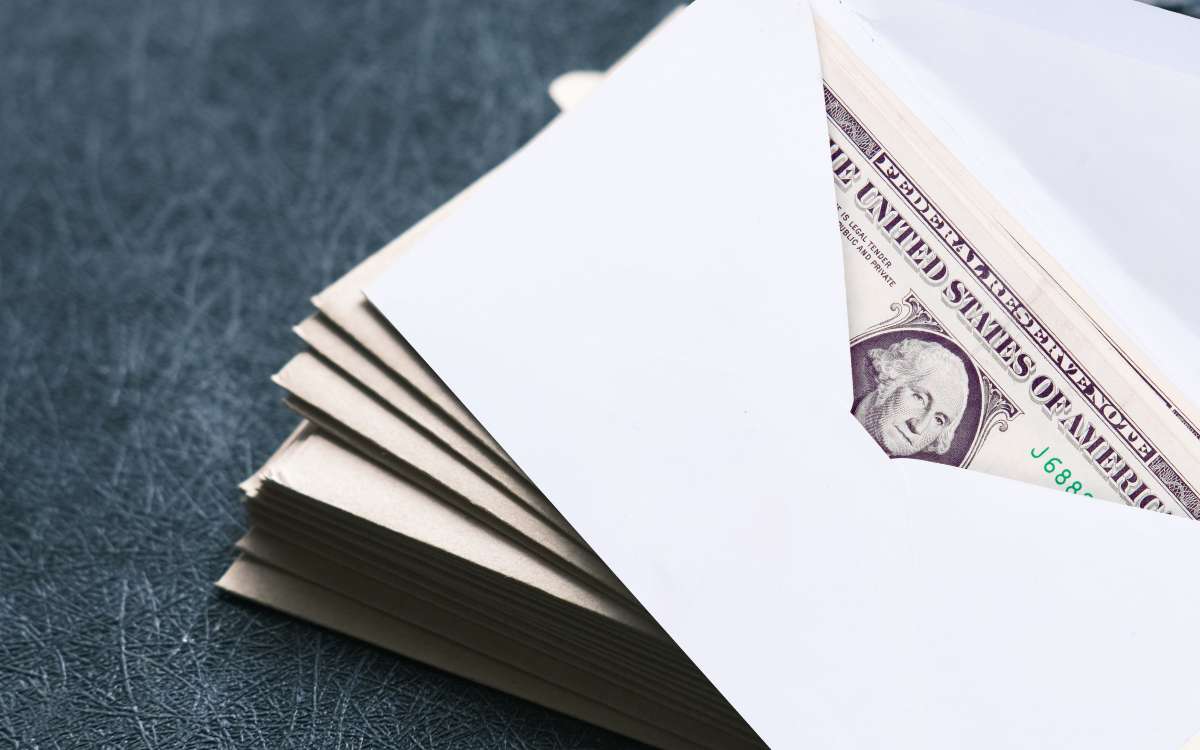
Table of Contents
- How Does the 100 Envelope Challenge Work?
- What Is the Envelope Budgeting System?
- Does the 100 Envelope Challenge Increase Your Savings Account Balance?
- How Much Money Do You Get From the 100 Envelope Challenge?
- What Supplies Do You Need for the 100-Day Envelope Challenge?
- Who Should Do the 100 Envelope Challenge?
- Who Should Not Do the 100 Envelope Challenge?
- Other Ways to Save Money Consistently
- Is the 100-Day Money Challenge a Good Way to Save Money Fast?
- What Are Variations of the 100 Envelope Challenge?
- What Is the 200 Envelope Challenge?
- How Much Money Do You Save With the 200 Envelope Challenge?
- How Can I Save $5,000 in 6 Months With 100 Envelopes?
- What Are Some Alternative Money-Saving Challenges?
- Summary: Saving Money With the 100 Envelope Money Saving Challenge
How Does the 100 Envelope Challenge Work?
This challenge works by giving you a jump start on building your savings. For 100 days, you gradually collect $5,050 dollars.
Each day, you’ll randomly select an envelope and add the amount written on the outside into the day’s savings.
Here are a few simple steps to getting started with the 100 Envelope Challenge:
- Set aside 100 envelopes.
- Number each of the envelopes from one to 100
- Every day, select one random envelope out of the pile.
- Add money to the envelope. Put in the same amount as is written on the envelope. For example, if you choose envelope 10, add $10.
- Keep doing this for 100 days, randomly selecting new envelopes.
- By the end of the challenge, you will have $5,050 saved for whatever your heart desires!
This challenge is simple, easy to follow, and requires little willpower.
It has a game-like element that makes it fun and engaging.
And best of all, it works!
What Is the Envelope Budgeting System?
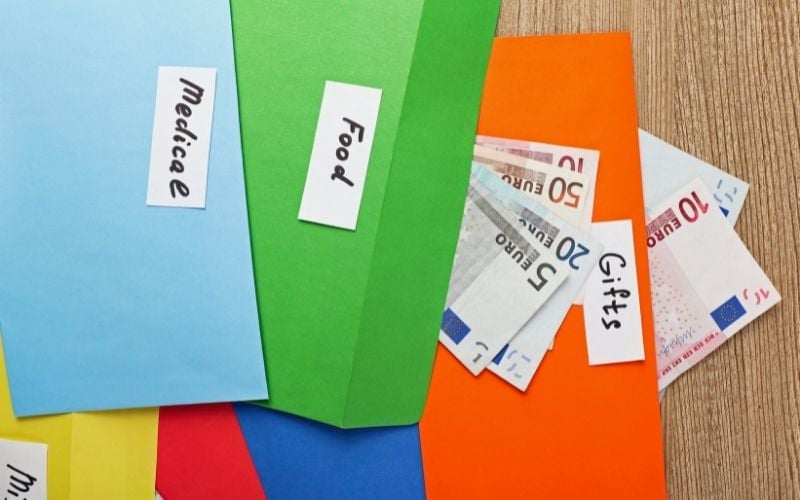
The Envelope budgeting system was designed by Dave Ramsey, a famous financial guru, in the early 2000s.
The envelope budgeting system is a cash-based system where you physically put money into envelopes labelled with different expenses.
For example, you may have an envelope for groceries, another for entertainment, and another for your mortgage payment.
When the money in an envelope is gone, you know not to spend any more on that category until the next payday.
As you gain stability in basic financial categories and work on paying off debt, you can then begin to save for long-term goals like retirement.
You can also expand into a few splurge budget categories, such as travel or a new wardrobe.
The envelope budgeting method is a great way to get a handle on your spending.
It forces you to be mindful of where your money is going and makes it easy to see where you can cut back.
It also stops you from using credit cards because you can only spend the cash that you have on hand.
Does the 100 Envelope Challenge Increase Your Savings Account Balance?
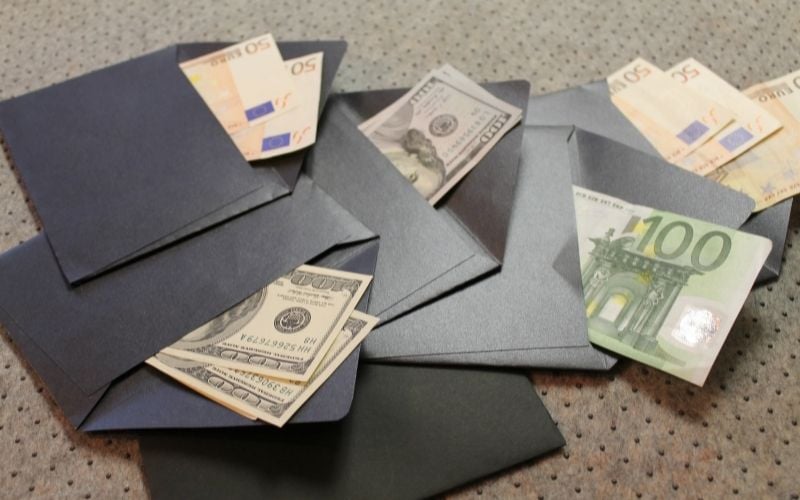
As with all budgeting methods, the 100-envelope challenge will only work if you’re diligent about sticking to it.
However, this challenge is a great way to jump-start your savings and get into the habit of saving regularly.
Technically, even if you participate in only 1 out of 100 days of this challenge, your savings account will come out ahead.
The longer you stick to the challenge, the more money you save.
Another factor that may affect whether or not your savings account will grow is other money you’re allocating to savings.
If you stop adding any savings you were already putting towards your savings, then your account may not grow at the same rate.
And finally, to make sure you increase your account balance, you’ll have to actually deposit the money into your actual bank account.
This may seem like a no-brainer, but if the cash is in your envelopes, it’s not doing you any good!
Even worse, you may be tempted to spend the money if it’s not out of sight and out of mind.
So be sure to deposit your cash at the end of each day or at least once a week.
If you do wait to deposit the money in your bank account until the end of the challenge, make sure to store it in a safe place so you’re not tempted to spend it!
By following these simple tips, you can be sure that the 100 envelope challenge will help you increase your savings account balance.
How Much Money Do You Get From the 100 Envelope Challenge?
The total earnings you’ll get at the end of the 100 envelope challenge is $5,050.
This assumes that you don’t miss a single day and always put the accurate amount of money in the envelope.
If you skip adding money for some days or don’t add the full amount, your total earnings will be less.
You can’t exactly calculate how much less since each envelope is randomly selected and the amount in each envelope varies.
If you keep track of the amount you add daily in a spreadsheet, you can better estimate your total even if you don’t complete the challenge perfectly.
Most of the money you will have saved in this 100 envelope challenge will be from the final ten envelopes, numbers 90 – 100.
Just 1/10th of the highest numbered envelopes account for almost 25% of the total amount at $1,045.
What Supplies Do You Need for the 100-Day Envelope Challenge?
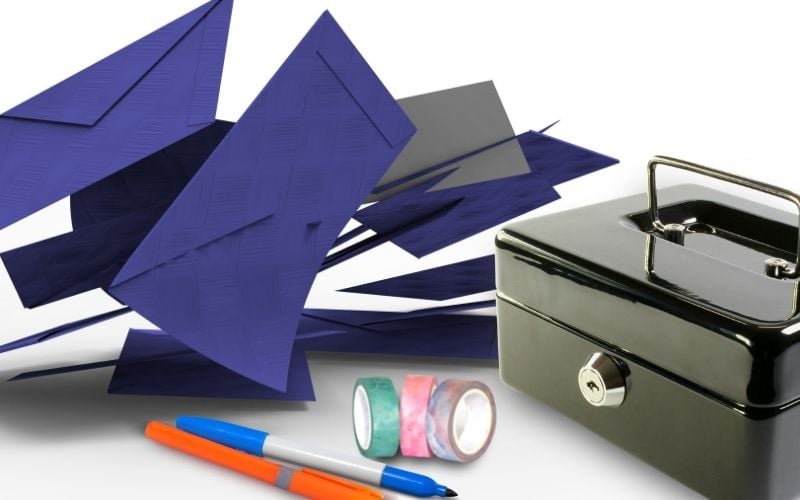
Are you ready to get started with the 100-day envelope challenge? There are a few supplies that will make your life a lot easier.
First, you’ll need to have 100 envelopes on hand. You can usually find these at your local office supply store or online.
Buy an envelope that is the correct size for the cash you’ll add.
You’ll also want a sharpie or permanent marker to label each envelope with the day’s number.
This will help you keep track of where you are in the challenge and make sure you don’t accidentally spend money from the wrong envelope.
If you want to get a little fancier, you can print labels with the day number and adhesive them to the front of each envelope.
Then, get a container that can hold all of the envelopes.
This will make it easy to grab the envelope for the day and avoid any temptation to spend money from other envelopes.
You may also want to consider getting a lock box or safe to store your cash in if you’re worried about losing track of it.
Finally, you’ll want to consider additional elements that make the process more fun and vivid.
This could include stickers, coloured markers, washi tape, coloured envelopes, or anything else that helps you stay excited about the challenge.
Who Should Do the 100 Envelope Challenge?
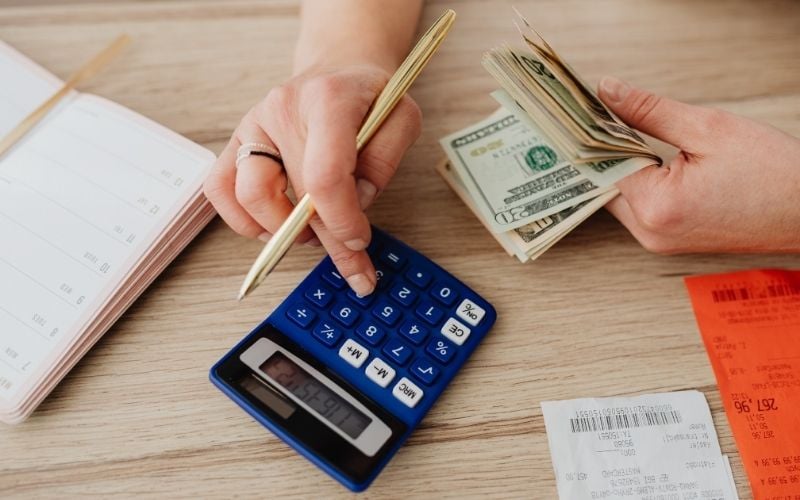
If you are already saving money, have a consistent income, and want to take your savings to the next level, this challenge is for you.
Of course, it will require that you have $5,050 to invest in the challenge over the course of 100 days.
You may already have this amount in cash.
Otherwise, you may need to reduce your spending in other areas of your life to have enough money for this money-saving challenge.
This challenge can teach high earners with poor spending habits how to save money better.
If you are bad at saving money, this challenge is for you!
It makes it less painful to start saving money since it is a randomised game with a set number of days.
It can also help if you are looking for creative ways to save money or earn extra income.
Is there a way you could earn spare cash each day (or week) to be able to put aside earnings?
Many flexible jobs can help you make money on the side to support your efforts in this challenge.
You could walk dogs, deliver food, or be a virtual assistant.
The gig economy is perfect for earning a specific amount of money each day to add to your envelope.
Who Should Not Do the 100 Envelope Challenge?
This money-saving challenge isn’t ideal for those with an irregular income.
If your monthly earnings vary greatly, it won’t be easy to estimate how much you need to set aside for the challenge.
If you have a lower income and don’t have extra money outside of the bare essentials, this may not be the best form of money management.
However, if you plan on earning extra money, as mentioned above, it can be a great way to focus on increasing your income.
The 100-envelope challenge is also not recommended for those bad at following through on commitments.
This challenge requires consistency and discipline to be successful.
If you have a history of not sticking to your goals, it may be best to try a different money-saving method.
Finally, if you are tempted to spend money when you have it in cash form, this could have a negative effect.
It may be best to keep your money in a savings account or use another method of saving that doesn’t require you to have the cash on hand.
Other Ways to Save Money Consistently
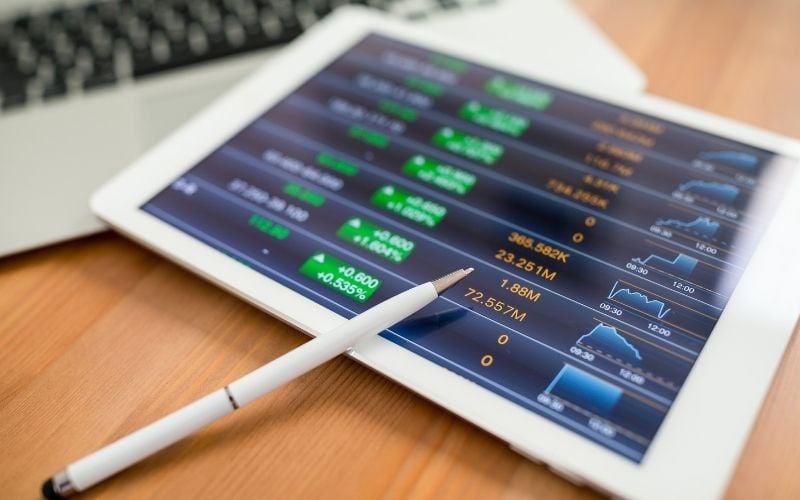
If the 100 envelope challenge isn’t for you, there are plenty of other ways that people can save money.
Here are some popular methods:
Set Up Automatic Deposits
This is a great way to ensure that you are always saving money.
You can have a certain amount of money transferred from your checking account to a high-interest savings account each month.
Many banks now offer sub-savings accounts, which allow you to separate your savings into different categories automatically.
This can allow you to save for a home down payment, emergency fund, or financial freedom all at once.
Create a Budget
Track your monthly spending and then create a budget based on your findings.
This will help you to create a customised savings plan that fits your specific needs.
Make sure to include room for savings in your budget.
Pay Yourself First
This method is similar to the automatic deposit method. You will make a savings deposit each time you are paid.
This can be done weekly, fortnightly, or monthly.
You may want to start a separate savings account so your personal money isn’t mixed with your business finances.
This can be a more aggressive way to save money.
You will need to do your research before investing, but it can be a great way to grow your wealth.
The best part about investing is that it helps to grow your savings beyond your initial investments.
This is a good option for those looking to build their savings without using them for at least ten years.
Is the 100-Day Money Challenge a Good Way to Save Money Fast?
The 100-day money-saving challenge can help you to save money quickly IF you have $5000 to spare over 1oo days.
This is an excellent option for those who are looking to save up for a specific goal.
If you want to save money as fast as possible, you can repeat the process or increase the amount you save each day.
What Are Variations of the 100 Envelope Challenge?
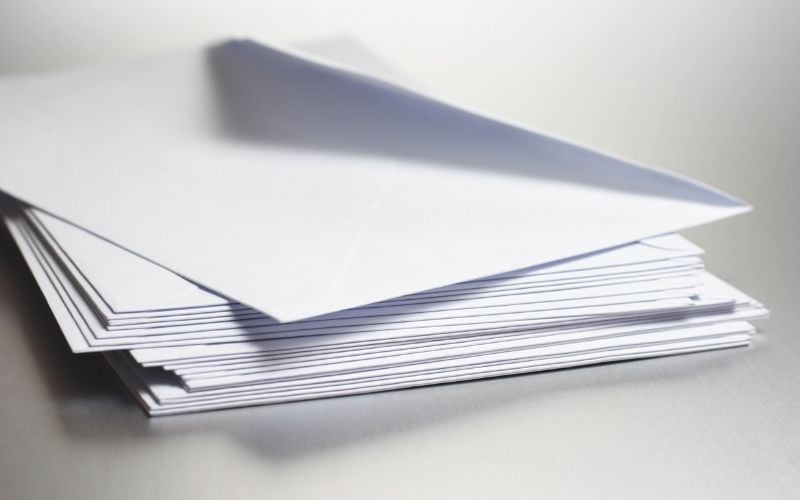
The 100-envelope challenge is flexible and can work for you no matter your budget.
If you want to save more money, you can create a variation of the challenge that works for your specific needs.
Firstly, you don’t have to use 100 envelopes. You can do the challenge for 10 days, 20 days, 50 days, or even 150 days.
Adjust this depending on your income and how much you want to save.
Secondly, you can fill your envelopes in order.
You can either go from 1 to 100 or from 100 to 1, depending on whether or not you want to be spending more or less at the end of the challenge.
This helps to give you a predictable set of daily budget goals.
Finally, you can make the challenge more difficult by setting a daily or weekly spending limit.
This will help to ensure that you are really sticking to your budget and not overspending.
What Is the 200 Envelope Challenge?
The 200-envelope challenge is the same as the 100-envelope challenge, but with twice as much money.
This can help you to save even more money in a shorter period of time.
Conversely, you can save as much as the 100 envelope challenge over 200 days by choosing an envelope every other day.
This is a good option for those who want to save a little more slowly and take more time to get earnings to pay for the savings.
How Much Money Do You Save With the 200 Envelope Challenge?
You either save $5,050 in 200 days or $10,100 in 200 days, depending on how you do the 200 envelope challenge.
The first option is better for those dipping their toes into this method, while the second option is best for those with a good amount of disposable income.
This option allows you to slow down or speed up your savings and create a customised plan that works for you.
You will be able to tuck away extra cash faster than traditional methods with this money challenge.
How Can I Save $5,000 in 6 Months With 100 Envelopes?
Saving $5,000 in 6 months breaks down to $833 a month, $209 a week, and $30 daily.
You could practice an alternative to the 100-envelope challenge and save $30 in an envelope for 180 days to reach this goal.
You could also practice the traditional version of the 100-envelope challenge and take several days, weeks, or even a few months off.
Six months maybe a good goal for completing this challenge if you don’t have a consistent or high income and want to be able to take your time to complete it.
You will still have several thousands of dollars in savings and will have made a reasonable effort towards building your wealth in just half a year.
What Are Some Alternative Money-Saving Challenges?

There are different types of money-saving challenges out there that you can try if you’re looking for something different from the 100-envelope challenge:
The 52-week Money Challenge
You save $52 the first week of the year, $51 the second week, and so on.
This challenge helps you to ease into saving money and can be done with any amount of money.
Since you pay one dollar less each week, you have the satisfying feeling of keeping more of your money on hand by the end of the year.
The 30 Day No Spend Challenge
For one month, you don’t spend any money on non-essential items.
This includes entertainment, eating out, new clothes, and anything else that isn’t a necessity.
This is a good way to save money without needing to keep track of specific numbers or putting money away.
Simply spend as little as possible.
The Printable Tracker Challenge
This challenge variation is very simple and very visual. You print out a sheet with 31 boxes, one for each day of the month.
Each time you save money, you color in or check off that day’s box.
This is a great way to stay motivated and on track with your savings goals.
The Change Challenge
This is a fun way to save money without even realizing it. Every time you get change back, put it in a jar.
At the end of the month or year, you’ll have a nice lump sum of cash that you can use for anything you want.
You can then bring this money to a Coinstar machine or your local bank to get it converted into cash or deposited into your account.
The No Eating Out Challenge

Another easy alternative to the 100 envelope challenge is to simply stop eating out for an entire month.
This will save you a lot of money, especially if you eat out frequently.
You can still go out with friends and family, but make sure to pack your own food or plan to eat at home before going out.
On average, you can expect to save $200-$500 a month by following this challenge.
Summary: Saving Money With the 100 Envelope Money Saving Challenge
What is the 100 envelope challenge? It’s a great way to save money!
Not only does it rack up thousands of dollars in a few short months, but it’s also a great way to get started on your long-term savings goals.
If you have a steady stream of income or plan on taking on additional work, this could be a good option for you.
Do you think the 100 envelope challenge is something you could commit to?
What other budgeting methods have you tried? Share your thoughts and experiences in the comments below!
Related:
- 16 Free Budgeting Printables To Save Money
- Why I have Two Budgets and You should Do Too
- How to Make A Zero-Sum Budget for Your Family
